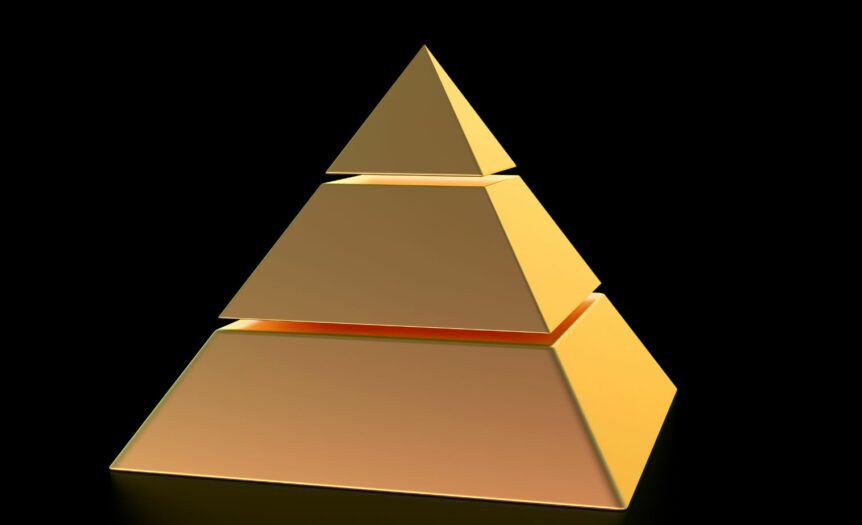Calculating the surface area of a square pyramid may seem like a daunting task, but with a few simple steps, you’ll be able to tackle it with confidence. A square pyramid is a three-dimensional shape that consists of a square base and triangular sides that meet at a single point called the apex. To calculate its surface area, we need to determine the areas of each face and then sum them up.
Firstly, let’s find the area of the base. Since it’s a square, we can use the formula A = s^2, where A represents the area and s represents the length of one side. Once we have this value, we can move on to calculating the areas of the four triangular faces.
To do this, we need to find both the perimeter and height of each triangle. The perimeter can be calculated by adding up all four sides of the base (4s), while determining the height requires some trigonometry using Pythagoras’ theorem or finding an appropriate measurement from given specifications. With these measurements in hand, we can apply the formula for calculating triangle area: A = 0.5 * base * height.
Once we have determined all five face areas (one base and four triangles), we simply add them together to obtain our final answer – which will give us an accurate measure of how much surface area our square pyramid encompasses.
Surface Area of A Square Pyramid
Calculating the surface area of a square pyramid can seem perplexing at first, but fear not! I’m here to guide you through the process with a simple and straightforward formula. The surface area of a square pyramid is determined by adding up the areas of its individual faces.
To calculate the surface area, we’ll need to consider two types of faces: the base and the lateral faces. Let’s break it down step by step:
- Base Area:
- The base of a square pyramid is, as you might have guessed, in the shape of a square.
- To find the area of this square, simply multiply one side length (s) by itself: A = s^2.
- For example, if one side length is 5 units, then the base area would be 25 square units.
- Lateral Face Areas:
- A square pyramid has four identical triangular faces surrounding its base.
- Each triangular face has a base equal to one side length (s) and height equal to the slant height (l).
- The slant height can be found using Pythagoras’ theorem: l = √(s^2 + h^2), where h is the height from the apex to the center point on an edge.
- Once we have both s and l values, we can calculate each triangular face’s area using this formula: A = 0.5 * s * l.
- Total Surface Area:
- To find the total surface area, simply sum up all four lateral face areas and add it to the base area: SA = B + 4L. Here, B represents Base Area L represents Lateral Face Areas

Step-by-step guide to calculate the surface area
Calculating the surface area of a square pyramid may seem daunting at first, but with a step-by-step approach, it becomes much more manageable. Let’s dive right in and break down the process:
- Identify the measurements: Begin by noting down the length of one side of the base (s) and the slant height (l) of the pyramid. These measurements are crucial for accurate calculations.
- Calculate the area of each triangular face: Since a square pyramid has four identical triangular faces, we need to find the area of just one face and then multiply it by four. To calculate this, use the formula A = 0.5 * b * h, where b represents the base length (s) and h denotes half the slant height (l/2).
- Find the area of the base: The base of a square pyramid is simply a square with sides equal to s. To calculate its area, use A = s^2.
- Add up all areas: Now that we have calculated both the areas of each triangular face and the base, sum them together to determine the total surface area of your square pyramid.
In conclusion, mastering this skill will not only enhance your mathematical abilities but also provide practical knowledge applicable across different fields such as architecture, engineering, and design. So go ahead and start exploring fascinating shapes like square pyramids with confidence!






